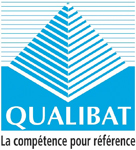Accounting For Construction In Progress Explained

Depending on the project’s size, construction work-in-progress accounts can be some of the largest fixed asset accounts in a business’s books. To simplify it, the CIP account is just an account that records all the different expenditures during a construction project. Because of this, it can be one of the largest fixed asset accounts in the books. The fixed assets like building space, warehouse, plant manufacturing, etc., can take years. A company can leave the financial statements blank for all times when work was in progress. It will violate the accrual principle to record some million revenues at the end of the construction.

How do I account for construction work in progress?
Construction in progress impacts financial analysis by providing insights into the amount of investment tied up in ongoing construction projects. It helps evaluate the capital expenditure, profitability, and overall financial health of the business. As construction projects grow in complexity, specialized CIP accounting technology and staff training help firms optimize financial oversight.
Utilizing Software Solutions
- Another objective of recording construction in progress is scrutiny and audit of accounts.
- The costs of WIP inventory are only recognized as expenses on the income statement when the related goods are completed and sold.
- Financial institutions typically verify customer identities using government-issued documents such as passports, driver’s licenses, or national ID cards.
- The articles and research support materials available on this site are educational and are not intended to be investment or tax advice.
- If your company is planning an expansion or large-scale construction job or just needs help with construction accounting, you need an experienced CFO team on your side to keep a detailed account of your finances.
Financial institutions must maintain records of customer identification documents, account opening documents, and transaction records. Unless your business is not one of the types of financial what is a cip account institutions listed below, CIP regulations do not apply to you. In other words, you are not required to have a Customer Identification Program and are not affected by CIP regulations.

Where does WIP sit on the balance sheet?
- In this section, we will explore the features and benefits of top-tier construction accounting software and discuss how technology enhances construction financial management processes.
- The biggest shift towards technology happened because it allows customers to open a new account without needing to visit a bank branch in person.
- Keeping accurate and up-to-date construction-in-progress accounts is also important because they tend to be the target of auditors.
- The security of their identity is priority one, but financial institutions must pay equal attention to their consumers’ preferences and experiences.
- There is no depreciation of the accumulated costs until the project is completed and the asset is placed into service.
All of our content is based on objective analysis, and the opinions are our own. Financial institutions are required to deny the account opening or suspend the account until the customer provides the required information. Employees should receive regular training on CIP requirements and best practices to ensure they understand their roles and responsibilities in maintaining compliance. Financial institutions must undergo regular regulatory examinations and audits to ensure compliance with CIP requirements. Financial institutions must apply enhanced due diligence measures for customers identified as high-risk.
- Revenue recognition is the process of recording and reporting revenue in financial statements.
- It also dictates which revenues and costs related to a construction contract should be recorded and when to record.
- Once costs have been allocated, and meets the criteria for capitalization, it is added to the CIP asset account in the company’s general ledger.
- You may be asked, for example, to submit only one item of identity at one company while another may ask for several pieces of identification.
- KYC encompasses understanding a customer’s identity and the nature of their business activities.
Cost-to-cost Method

The most common capital costs include material, labor, FOH, Freight expenses, interest on construction loans, etc. Compliance with CIP requirements is essential to avoid significant penalties and legal actions, with ongoing staff training and awareness and leveraging technology for efficiency as best practices for effective implementation. Financial institutions should establish clear and comprehensive policies and procedures to guide their CIP implementation and ensure compliance with regulatory requirements. Technology can help improve the customer experience by simplifying and speeding up the identity verification process.
Is construction in progress an intangible asset?
Tracking and communicating the true project cost on an ongoing basis via CIP accounting is vital. Asset Valuation – Faulty CIP tracking can lead to assets being undervalued or overvalued on the balance sheet. Complex construction projects involve numerous stakeholders, supply vendors, streams of expenses, and documentation. Under this simpler method, all revenues, expenses, and profits are recognized only at the end after project completion. Expenditures are accumulated in a CIP account throughout the construction timeline.

Construction work-in-progress accounting refers to the record-keeping of all expenditures that accrue in constructing a non-current asset. An accountant will report spending related to the construction-in-progress account in the “property, plant, and equipment” asset section of the company’s balance sheet. Streamlining your identity verification process and balancing out a seamless customer account opening process is possible. What’s best about our fraud prevention platform is that we have multiple automated tools in one place. That’s how we also help you ensure ongoing AML compliance, including real-time screening against sanctions and PEP lists, UBO checks, watchlist screening, or adverse media checks. That means banks and other financial institutions can be flexible when creating and executing programs tailored to their distinct risk profiles.

